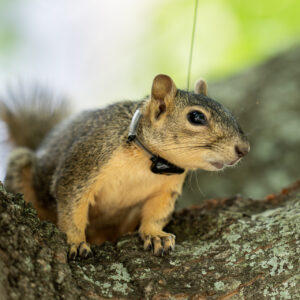Samea multiplicalis (Guenée)
[Lepidoptera: Pyralidae]
Samea multiplicalis is native to southern Brazil
Room et al. (1984) report Samea multiplicalis releases at three sites in Australia, where they became established . They dispersed about 170 km in 20 months. Control of S. molesta was not achieved at any of these sites. Forno (1985, 1987) report releases in Australia in conjunction with the salvinia weevil. It was also released and established in Queensland (Sands and Kassulke 1984) but was not considered effective. The moth did not reduce plant growth permanently in any study site.
Samea multiplicalis has not been released in the United States.
This moth is attacked by several parasites which may limit its population growth. Like the salvinia weevil it is sensitive to nitrogen levels of the plant.
Samea multiplicalis feeds on Salvinia molesta, Pistia stratiotes, and probably other plants as well. The host range does not seem to be well studied.
Forno, I. W. 1985. How quickly can insects control Salvinia in the Tropics? Proc. 10th Asian-Pacific Weed Sci. Conf., Chiang Mai, Thailand. Nov. 1985. P. 271-276.
Forno, I. W. 1987. Biological control of the floating fern, Salvinia molesta in north-eastern Australia: plant-herbivore interactions. Bull Ent. Res. 77: 9-17.
Oliver, J. D. 1993. A review of the biology of giant salvinia (Salvinia molesta Mitchell). J. Aquat. Plant Manage. 31: 227-231.
Room, P. M., I. W. Forno, and M. F. J. Taylor. 1984. Establishment in Australia of two insects for biological control of the floating weed Salvinia molesta. Bull. Ent. Res. 74: 505-516.
Sands, D. P. A., and R. C. Kassulke. 1984. Samea multiplicalis (Lep.: Pyralidae), for biological control of two water weeds, Salvinia molesta and Pistia stratiotes in Australia. Entomophaga 29: 267-273.





